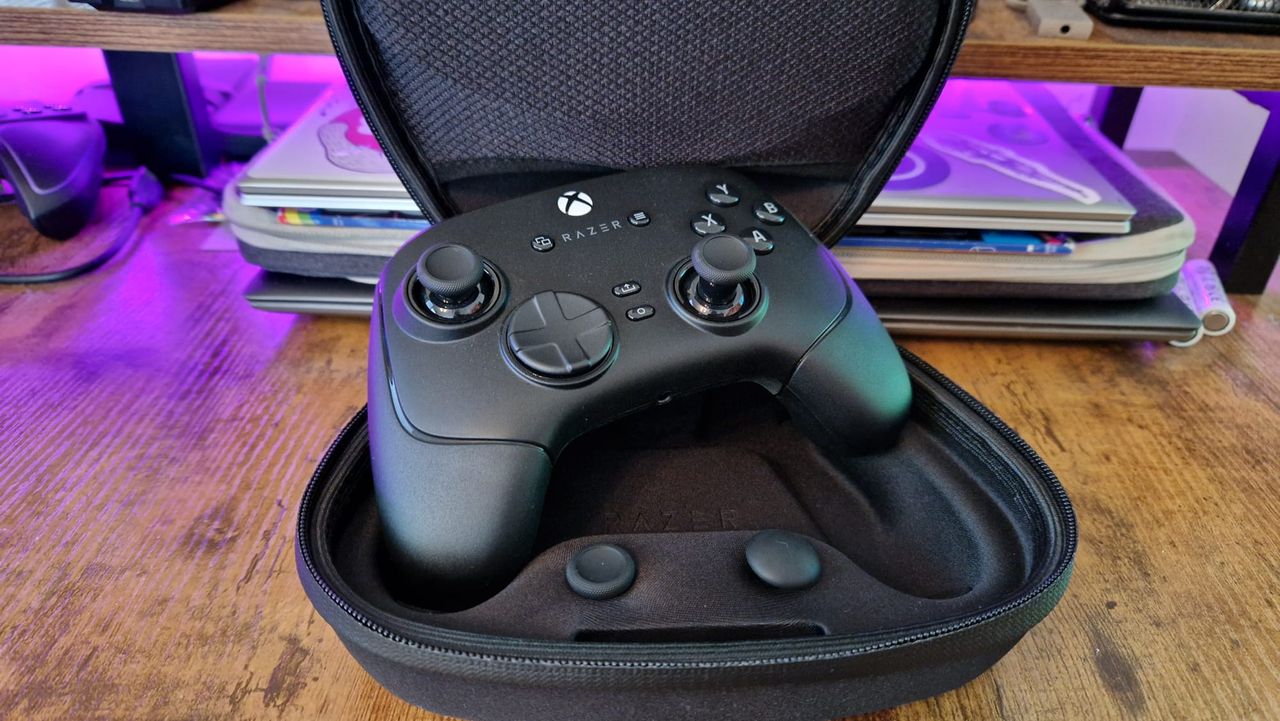
The Razer Wolverine V3 Pro is by far the best controller this brand has ever produced. Razer controllers have always sounded so good on paper - I remember being more excited for the Wolverine V2 Pro than the DualSense Edge a couple of years ago because it offered six extra buttons, microswitch buttons, and a beefier feel.
In practice though, I’ve always found Razer’s controllers to ever so slightly miss the mark, either misplacing their back buttons or ultimately feeling cheaper than their premium price tags should suggest. The Wolverine V3 Pro feels like a new chapter though, and it’s making a serious play for a spot on our best PC controller list. This is a peripheral that shows Razer has gone back to the drawing board, listened to feedback from fans and critics, and genuinely improved upon its product.
Even the price has been refined, although I’m not sure people will be any happier with the result. The Razer Wolverine V2 Pro on PS5 costs $249 / £249, but the enhanced V3 Pro has managed to adhere to the $200 / £200 mark. If that’s still too much for you, Razer has made a Tournament Edition, which skimps on a few features but comes in at just $99.99 / £99.99. Are all of these improvements enough in a market that’s stacked with affordable competition?
Design
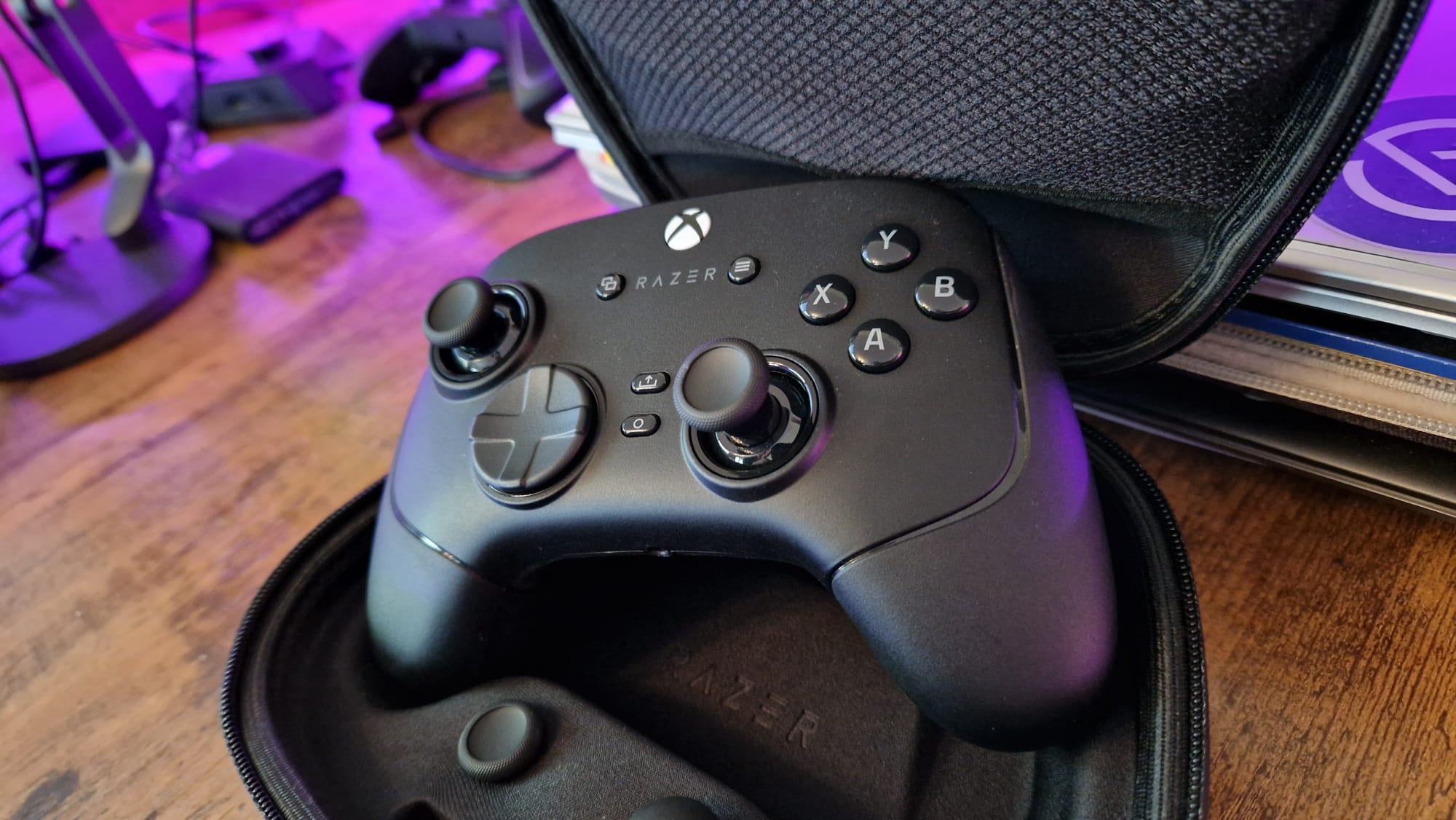
The design ethos behind the Razer Wolverine V3 Pro was to convert the speed and performance from Razer’s successful mice and keyboards into an Xbox Series X controller. After all, controller players are constantly mocked for not being able to keep up with traditional PC players, but if they have the speed of mechanical switches from Esports mice at their fingertips, maybe that’ll give them the boost they need.
In shape and size, the V3 Pro feels similar to the previous Wolverine models. It has that slightly bloated, more rounded feel in the hands than the stock Xbox controllers, but the new version feels more robust and professional than the Razer Wolverine V2 Pro ever has. I always find that Razer’s PS5 controller has a fairly hollow feel to it, and its metallic thumbstick guards create an echoed clacking sound that doesn’t do much to justify its high price tag. The V3 Pro sounds much tougher, and although I don’t like its $200 demands, it at least feels like a premium peripheral. Besides maybe the PowerA Advantage Controller, I can’t think of another gamepad I’d bet money on surviving a Mous case-style drop test.
There’s clearly a lot of thought that’s gone into this pad’s extra buttons. According to Razer, they feature actual mouse switches from one of its unnamed Esports mice.
The grips have a rubberized hexed texture that doesn’t over-exert itself. The GameSir Kaleid Flux controller has that 3D dotted texture on its grips which sometimes makes your hands itch, but the V3 doesn’t go that far. Despite some refined ergonomics elsewhere in the package, I’m a tad disappointed that the grips haven’t been elongated since previous Wolverines. My pinky fingers don’t feel catered to with this pad, which becomes more of a problem now that the back buttons are placed properly.
To be completely frank, the back button placement on the older Wolverine models is completely nonsensical. They live on the controller’s back plate, but they’re central and are placed far too high up. The result is a pair of unruly half-triggers that pay no mind to how a human being actually holds a controller. The back buttons in the V3 models feel like the biggest improvement of the entire product because they sit exactly where your middle and ring fingers naturally rest. I find I can either curl my fingers to press these with their tips, or I can have a more relaxed hold and actuate the buttons with the insides of my DIP joints.
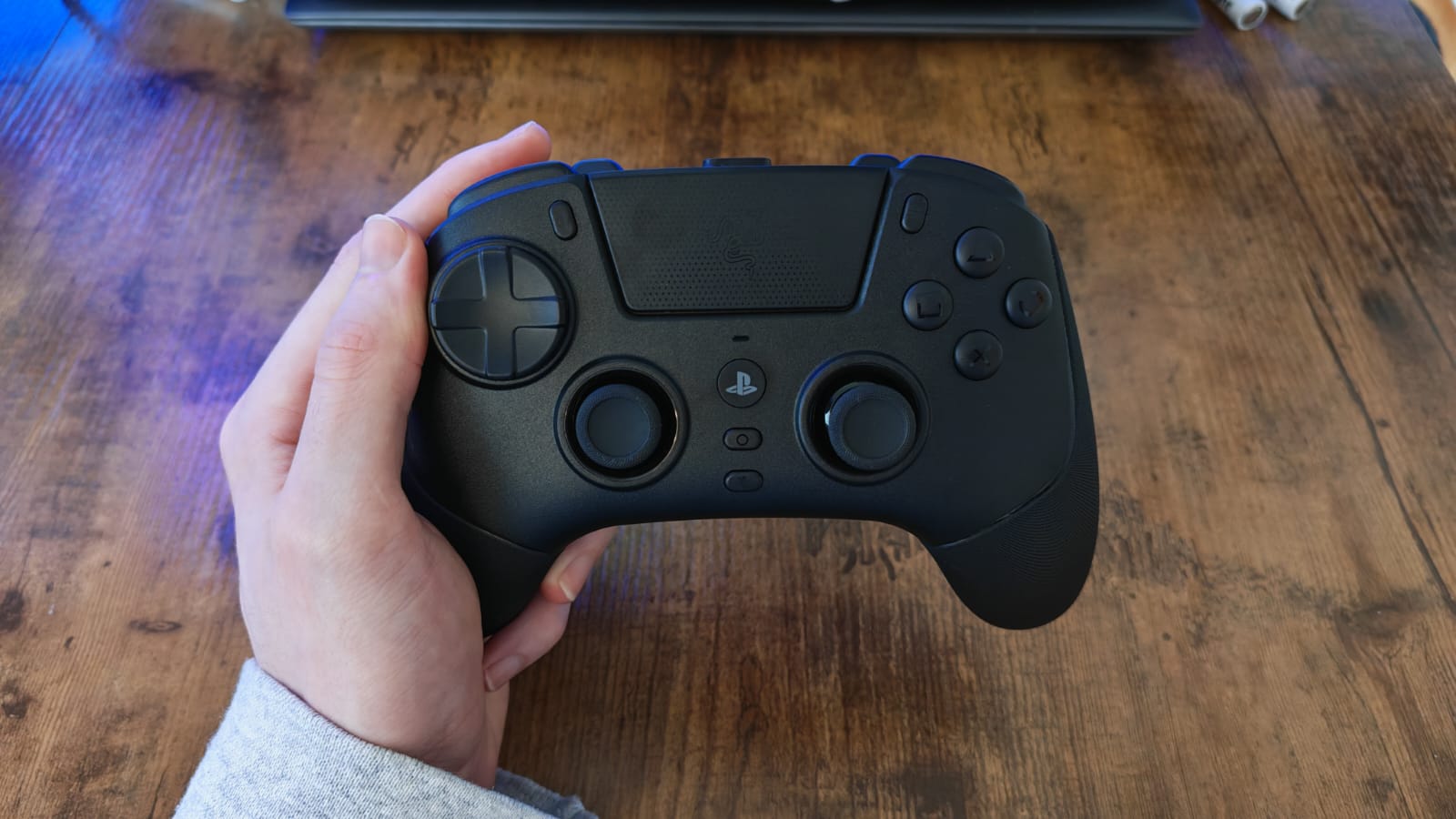
Features
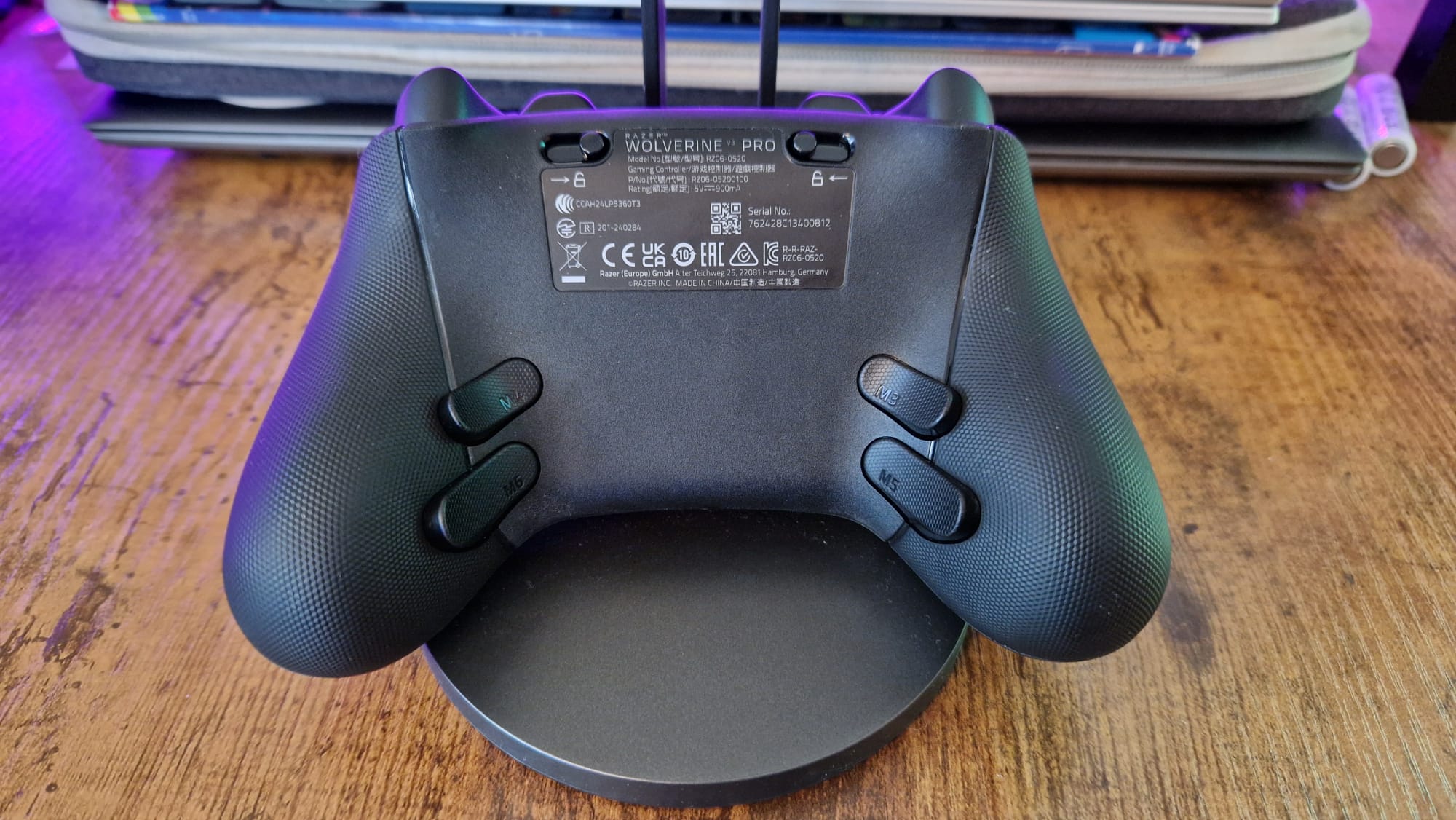
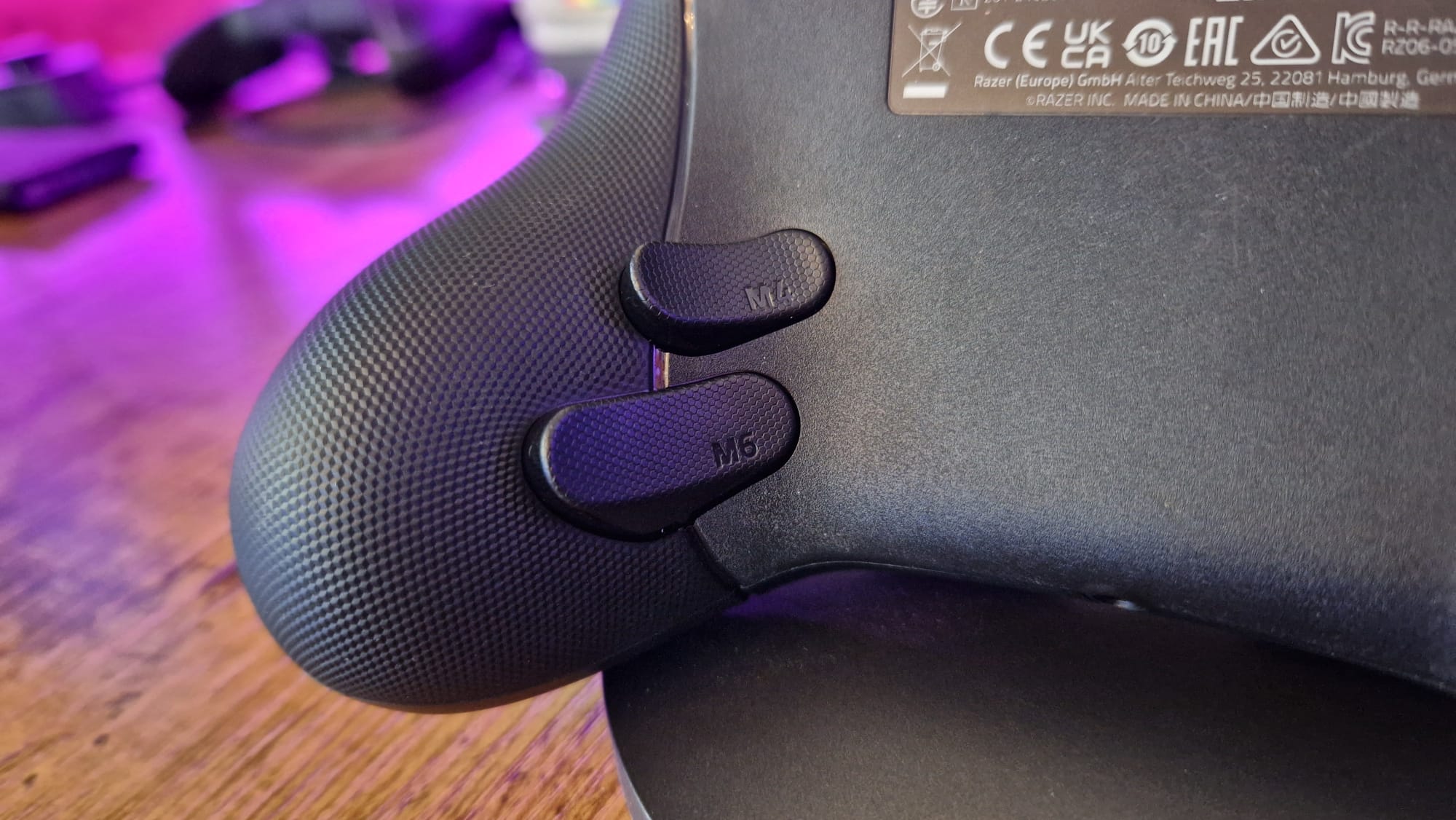
The Razer Wolverine V3 Pro is an officially licensed Xbox controller, which means it’s available to use with that console and ecosystem, as well as PC. Razer, like more and more peripheral makers these days, has skirted around that annoying stipulation for Xbox controllers that means they can only use a wired connection. The V3 Pro is a wireless option that comes with a USB dongle, but most competitive PC players might be drawn to a wired connection anyway since it can reach a 1000Hz polling rate when tethered. The more affordable Tournament Edition is locked to a wired-only connection, so this is worth weighing up if you’re trying to decide which controller to go for.
As an FPS controller, the Wolverine’s six extra buttons are as good as ever. I was able to wield all of the in-game actions in Hunt: Showdown, barely needing to take my thumbs off of their sticks.
There’s clearly a lot of thought that’s gone into this pad’s extra buttons. According to Razer, they feature actual mouse switches from one of its unnamed Esports mice that’s supposedly “market leading”. I’d love more specifics on that if I’m honest, but they do the trick. Either way, this places them in a league of their own. Back buttons are usually simple plastic switches that don’t have much feel to them at all, and back paddles found on the DualSense Edge and Elite Series 2 use magnetic levers that feel much more premium. With a mechanical set of four back buttons, the V3 Pro treads the line between the two, offering more speed and a feel that’s consistent with the product's other switches.
Looking at the controller from the top down, we have the two additional bumpers that this line of Razer’s controllers is known for. These are almost identical to the ones found on the Razer Kishi Ultra, and although they’re not my most-used feature, Razer wanted to carry them over for players who use a “claw-grip”, since they aren’t catered to all that often.
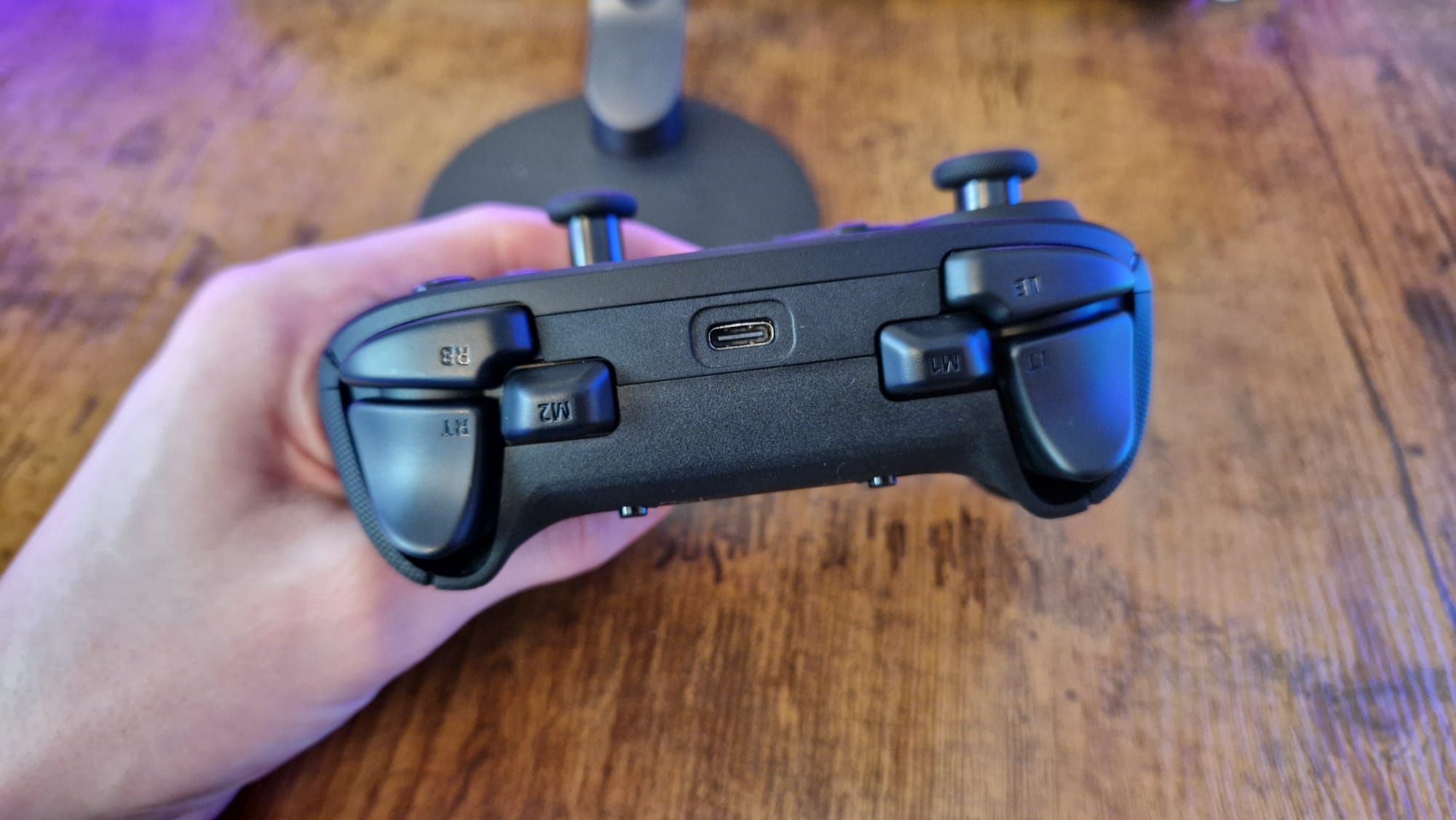
The rest of the buttons use a mix of membrane and mechanical switches, so the D-pad feels very spongy while the very shiny face buttons have more responsiveness. Using the trigger-stops, you can even give the triggers a super-quick mechanical actuation, which could be huge for budding Esports players. The Hall Sensor thumbsticks have removable tops, which is a first for Razer. For the brand that charges the highest price for its controllers, it is wild to think this is the first option with replaceable thumbsticks and a carrying case. It’s not quite the attachment selection offered by the Victrix Pro BFG for Xbox, but it’s much better than a controller and a cable in a plastic box, which is what Razer has offered until now. If you do opt for the cheaper Tournament Edition, you won’t get that carry case.
On an Xbox, the V3 Pro pads feature a 250Hz polling rate, which is standard for the platform. You’ll also be able to benefit from Xbox haptics, but on PC you get more for your investment, with that 1000Hz polling rate when wired, as well as Razer’s RGB Chroma syncing up with your rig’s other Razer-lit accessories. Of course, the Razer controller app for mobile and PC lets you tune deadzones for both sticks and remap the additional buttons. I’m delighted that you can do the latter without downloading an app though.

Performance
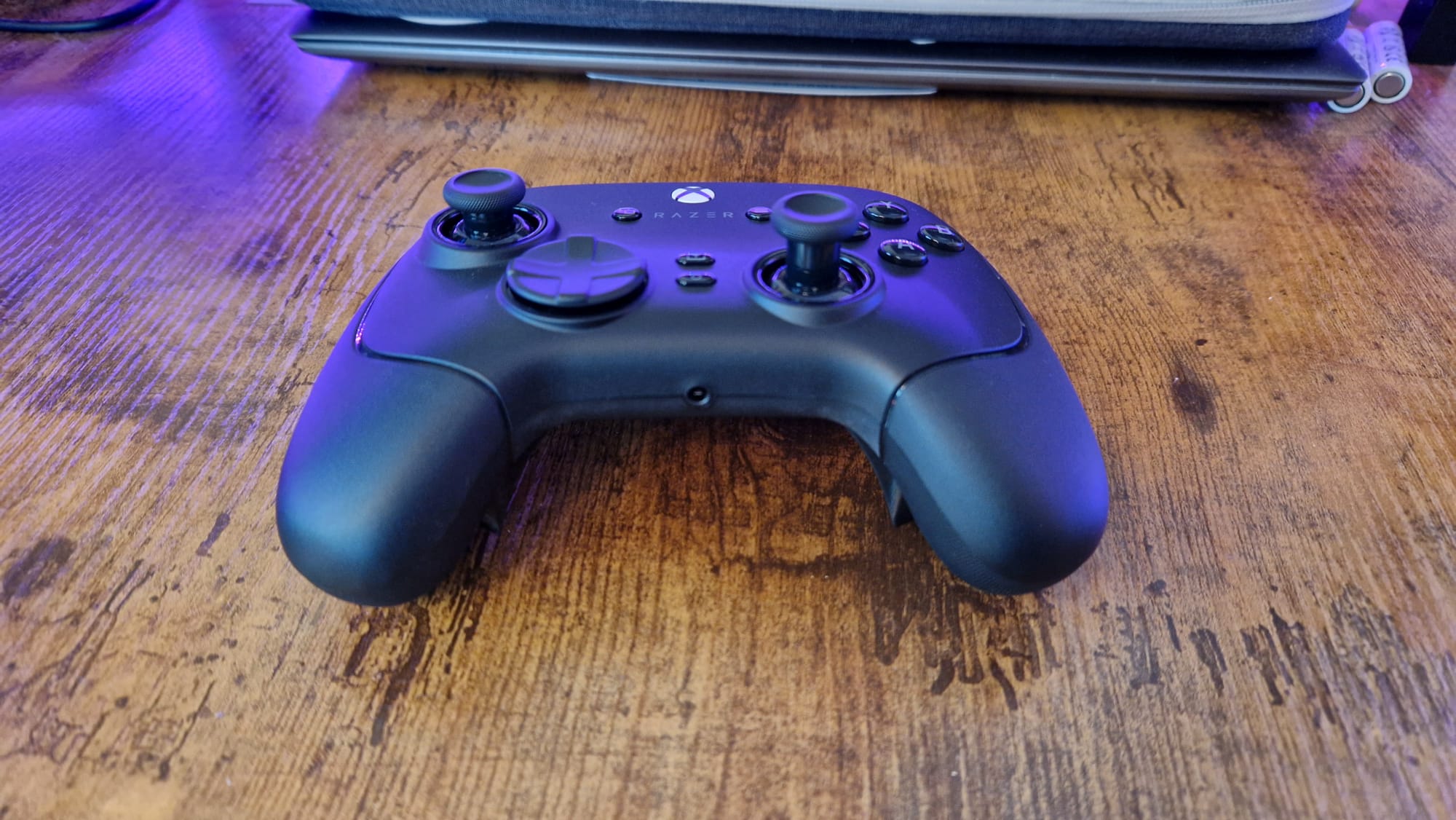
I’ve played loads of different games with the latest Wolverine controller, from Dragon Ball: Sparking Zero to Pools, to platforming around in Owlboy. This really is a versatile controller, and it has as much to offer in single-player games as it does in competitive multiplayer ones.
Even in early tests, it’s clear that speed was a priority for Razer’s product designers. Nothing better exemplified that than my time in Dragon Ball: Sparking Zero. Speed is quite literally everything in that game, and both the back buttons and face buttons have saved my skin during many a difficulty-spiked bonus level. I did, however, find that the game’s button-mashing moments felt less forgiving on this controller than on the likes of the DualSense on PS5. Mechanical or membrane buttons are great for fast actuation, but something about them makes my joints scream “Please stop doing this, you aren’t 12 years old anymore”.
Speed was equally useful when playing through a level of Celeste, as I do with every controller I test. Back buttons can be a blessing and a curse when it comes to this game’s tight platforming because if they take too much pressure to press, you can end up hindering yourself. Using back buttons, face buttons, analog sticks, or a d-pad with the V3 Pro, I felt I had an accurate tool for the movements I was trying to pull off.
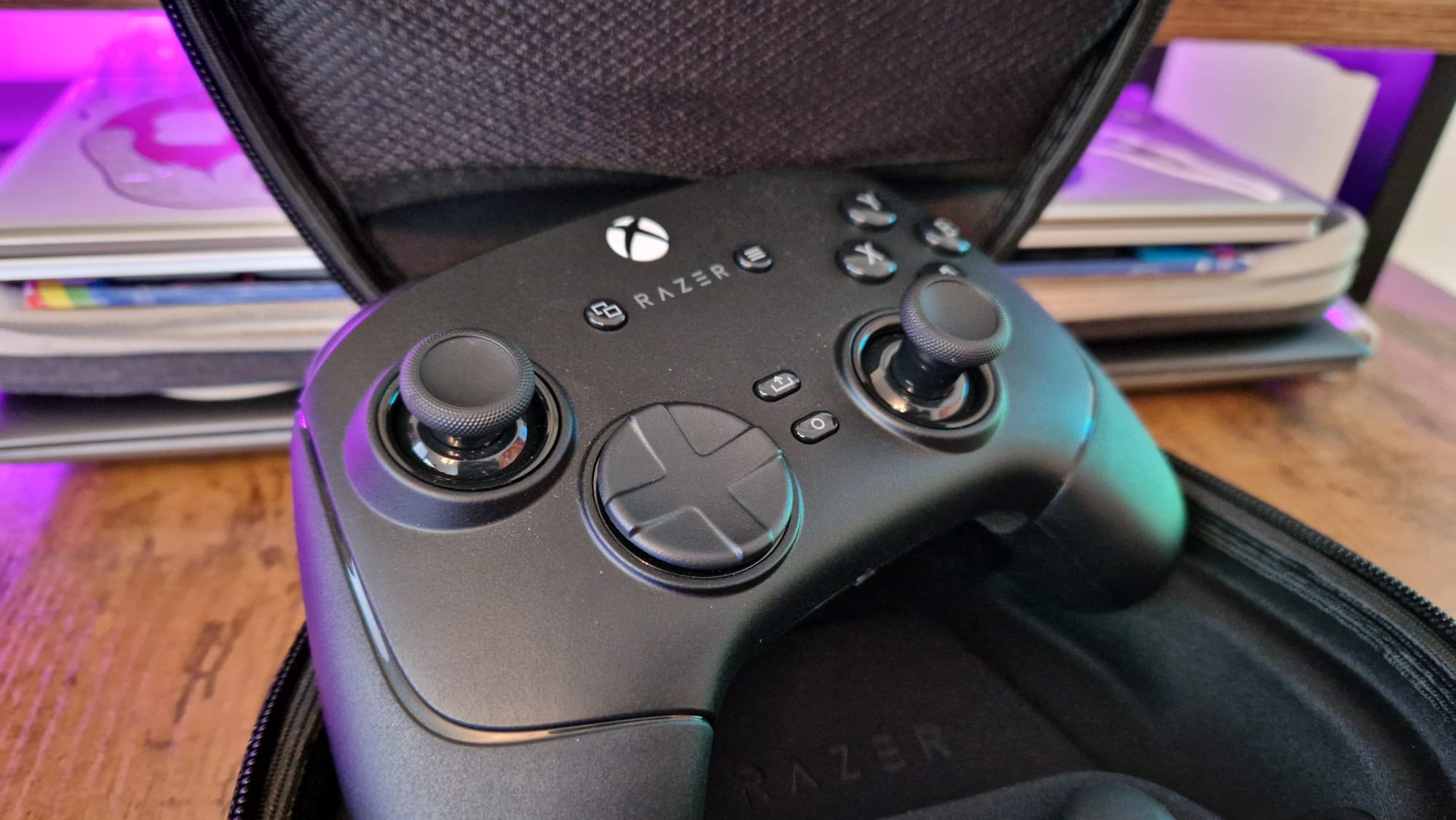
I do, however, have a gripe with the wireless connectivity. When playing on a PC using the wireless USB dongle about five feet away from me, I frequently found that sitting the controller on my lap and crossing my legs, was enough to block the connection, which created all sorts of problems. Sometimes, it prevented the PC from actually pairing with the controller, which was infuriating when I was trying to enjoy a quick level of Owlboy on a lunch break. I have found this to be a frequent issue with some wireless controllers, but I haven’t experienced it quite as much as I did with this one.
It really shows you just how much Razer has been overcharging for its V2 Wolverine on PS5 when this massive improvement costs less - and it's still $200.
Luckily, the thumbsticks are another saving grace of the V3 Pro. I recorded gameplay of Pools for a video I was making a few months ago, and the eerie tension in that game means that quick turns of the camera are vital. Using the Wolverine’s taller thumbstick attachment I was able to look over my shoulder for lurking eldritch monsters at a moment’s notice. When I was taking a moment to enjoy the game’s vast halls, smooth camera pans were a breeze to control, and it’s nice to have a peripheral that can do both.
As an FPS controller, the Wolverine’s six extra buttons are as good as ever. I was able to wield all of the in-game actions in Hunt: Showdown, barely needing to take my thumbs off of their sticks. I do wish the deadzones were smaller out of the box since I felt my accuracy suffered before diving into customization software. Overall, the V3 Pro wasn’t exactly on par with the Azeron Cyborg II, but this is still one of the best gamepads currently available for FPS games. In a similar way, game feel wasn’t quite on par with the Turtle Beach Stealth Ultra, but it was good enough that I didn’t feel I needed to finetune the out-of-the-box vibration levels.
Should you buy the Razer Wolverine V3 Pro?
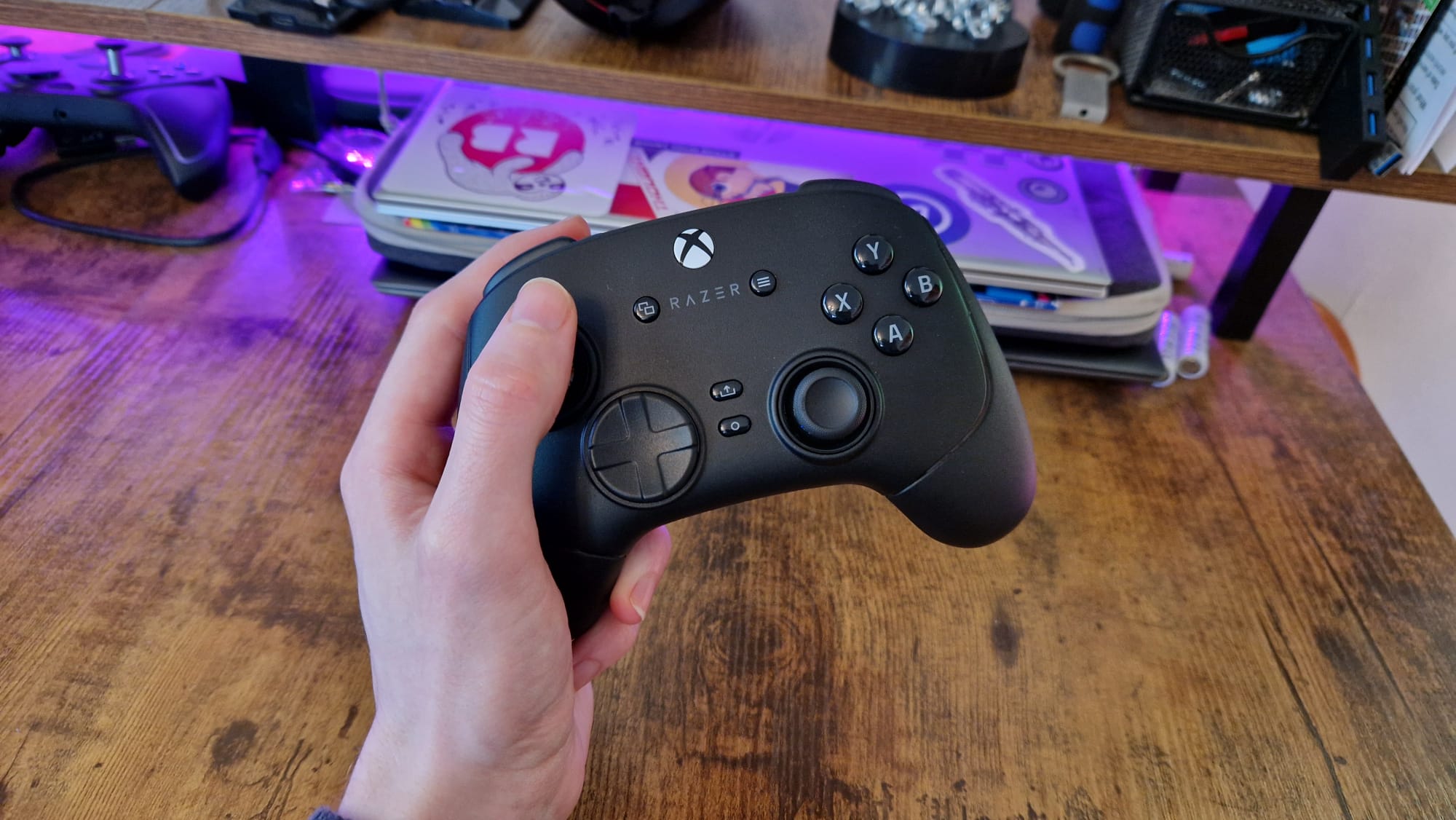
It really shows you just how much Razer has been overcharging for its V2 Wolverine on PS5 when this massive improvement costs less - and it's still $200. There’s no dodging the fact that the competition from GameSir and EasySMX is now capable of throwing out equally good products for much, much less money than this. The PowerA Fusion Pro manages to stay under $100 while also having four back buttons and official licensing from Microsoft, so I struggle to see why the V3 Pro should cost as much as it does. Even Victrix and Turtle Beach manage to keep their options under $200.
Sure, you could opt for the Tournament Edition if you’re willing to forgo a carry case, the grip textures, swappable thumbsticks, and a wireless connection. Then again, I haven’t tested that model, so I can’t say it’ll have that truly robust feel that I enjoyed here.
On the other hand, this is a controller that feels speedier than the current pool of Xbox options. If you’re drawn in by six extra buttons (that are actually usable now), mechanical and membrane feel, and the pedigree of Razer’s previous work, I can’t blame you for splashing out on this. It’s a premium option, but you’ll likely be happy you spent the money on it.
How I tested the Razer Wolverine V3 Pro
I put the Razer Wolverine V3 Pro to the test for a number of months before this review was written. In that time, I used it for the majority of my PC playtime, in games like Celeste, Dragon Ball: Sparking Zero, Owlboy, Hunt: Showdown, Pools, and Hellblade II. I used the controller in wired and wireless mode and swapped the back buttons and extra bumpers extensively during my testing time.
I compared my experience closely to when I reviewed the Wolverine V2 Pro, as well as other Razer gamepads. For more on how we test controllers, check out the full GamesRadar+ Hardware Policy.
Looking for something cheaper? There are plenty of options out there if you look at our list of the best Xbox One controllers, best PS4 controllers, or the best Xbox Series X accessories.







